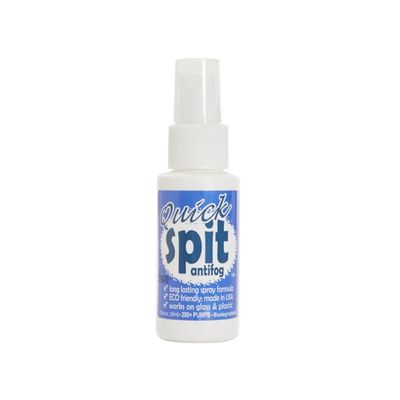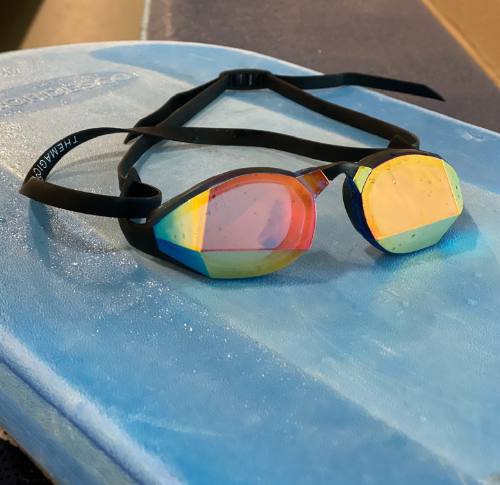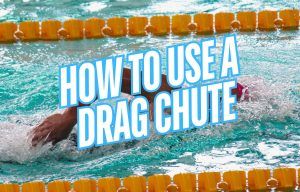Leaky swim goggles are a pain in the butt when trying to swim. Here’s your ultimate guide to how to fix leaky swimming goggles.
One of the most irritating things when trying to churn out a quality swimming workout is having your favorite swimming goggles leak water.
Here are some step-by-step instructions for keeping water out of your swim goggles so that you can focus on technique and swimming fast instead.
How to Fix Leaky Swim Goggles
Here are some time-tested ways you can make your swim goggles leak-free when in the pool:
- Adjust the nosepiece.
- Tighten the head straps.
- Create suction with the goggle gasket.
- Protect the anti-fog coating.
- Wear a swim cap over your swim goggles.
- Invest in customized swim goggles.
Next, we will take a deeper look at each tip and highlight some solutions you can introduce to troubleshoot and solve those leaky swim goggles once and for all.
1. Adjust the nosepiece.
Swimming goggles come with a variety of nose bridges that connect the google lenses.
When the lens sockets are too far apart or too narrow, they aren’t optimally placed on the eyes for a leak-free fit.
Goggles should be both comfortable on your face and leak-free.
Using the right nose bridge means either playing with the various nose pieces that come with your swim goggles or adjusting the strap length that connects the goggle lenses.
2. Tighten the head straps.
Swim goggles have one or two head straps that keep the goggle sockets firmly in place over your eyes.
Aim to have the straps on a slight incline, which will help gently “pull” the lenses into your face.
Loose head straps will slide down the back of your head while you swim, creating a situation where your goggles will fill quickly with water, so make sure the goggles are snug on your face.
3. Gently push the goggles into your face.
Suction is your best friend when dealing with leaky swim goggles.
Push the goggles slightly into the skin of your face, creating some suction and a waterproof seal.
Swim goggles have silicone or rubber gaskets that suction into the skin, creating a watertight seal to keep your vision clear while you crank out your swim workout.
4. Protect the anti-fog coating of the goggles lens.
During more strenuous swim workouts, you will find that the condensation in your swim goggles will build to the point that you need to wipe or empty the lens.
Avoid the urge to rub the inside of the lens with your fingers, as this will remove the anti-fog coating that goggle makers put in the goggles. Over time, the anti-fog coating will fade.
Using a quality anti-fog spray for your goggles is a great way to extend the lifespan of your swim goggles while also reducing the amount of water that builds up in the lenses.
Additionally, you can ward off scratches and dirt build-up on the lenses by using a case for storing swim goggles between swim practices.
5. Wear a swim cap over your swim goggles.
Swim caps have a lot of functions in the water, including protecting your hair from chlorine, keeping hair out of the pool, and keeping long hair from blinding you while swimming.
Choosing the right swim cap can also–albeit marginally–help you swim a little faster, too.
(Swim caps also—fun fact—do not keep your hair dry while swimming, but that’s a topic for another day.)
Caps worn over the straps of your swimming goggles help to keep the goggles in place while swimming.
This is especially important when diving into the water, when it is prime time for swim goggles to fall off and leak catastrophically.
Putting on your swim goggles and then your swim cap is a way to keep the head straps from moving around and help reduce goggle leaks.
6. Invest in customized swim goggles
Leaky swim goggles are almost always the result of ill-fitting swim goggles. The gasket is too small, the nosepiece too narrow, and the goggles don’t sit optimally in the eye sockets.
For swimmers who struggle to find that perfect leak-free swim goggles, consider investing in swimming goggles that have gaskets specifically designed according to the size and measurements of your face.
At the time of writing, the only swim goggle manufacturer that offered custom a goggle gasket was TheMagic5.
The process by which they create a one-of-a-kind goggle gasket is pretty cool: using a proprietary smartphone app that scans your face, TheMagic5 builds a swim goggle tailored to your exact face.
TheMagic5 Swim Goggles aren’t exactly cheap, retailing for $65-90 per set of goggles, but for swimmers who have tried everything under the sun to find swim goggles that don’t leak, TheMagic5 are worth checking out.
Additionally, if the goggles still leak, TheMagic5 has a leak-free guarantee for peace of mind.
+ Custom fit for your face
+ Comfortable for extended wear and reducing headaches
+ Extremely slim lens profile
+ Available in 11 colors/tints and discounts on bundles
Why Does Water Leak into My Swim Goggles?
The primary reason that goggles leak water is because they are improperly sized to your face. You can almost always completely eliminate leaky swim goggles simply by taking a little bit of time to ensure the goggles are fitted optimally.
Other reasons that your swim goggles leak include:
Insufficient suction.
The goggle isn’t tight enough on the space to create a water-tight seal.
You can solve this by gently pressing the goggles into the face and tightening the head straps for a more secure fit.
Improperly sized nosepiece.
When goggle lenses are too spaced apart, they will take on water. Same goes when the nose piece is too short.
A nose piece that is too small for your face will also dig into the sides of your nose, leaving it sore over time.
Loose head straps.
The head straps on your swim goggles should be tight enough to keep the lenses suctioned to the face, keeping water out.
Obviously, there is a point where too tight is uncomfortable, but the straps should be adjusted to keep the goggles snug on your face.
Cracks in the gasket.
Rubberized or silicone gaskets are designed for both comfort over extended wear as well as help maintain a watertight seal for your swim goggles.
If the goggles are secure on the face, and the nose piece is properly sized, check the gasket for any cracks or breaks.
If this is the case, it’s time to shop for some new swim goggles.
The Bottom Line
Swim goggles are one of your best friends when it comes to swimming quickly and safely in the water.
They allow for better vision, help you see other swimmers, pool walls, and even protect your eyes from becoming red and itchy after being exposed to pool water.
With some quick adjustments, you can stop your swim goggles from leaking and make your swims much more enjoyable.
Happy swimming!
More Swim Goggle Guides
How to Clean Your Swim Goggles (Step-by-Step). Nothing ruins a good swim faster than dirty goggles. Here’s everything you need to know about cleaning your swim goggles and keeping them in tip-top shape.
Why Do Swimmers Wear Mirrored Swim Goggles? Curious why competitive swimmers wear dark or mirrored swim goggles? Here is why, including the pros and cons of using mirrored swim goggles in the water.















